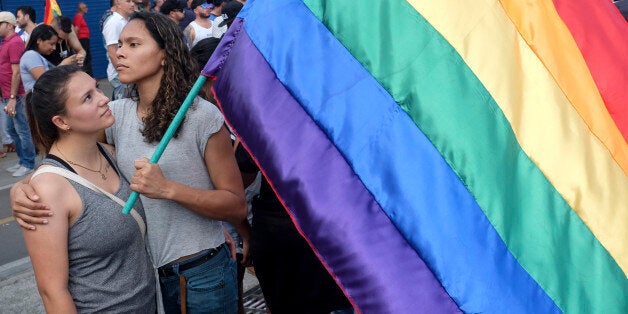
As Pride approaches it becomes all too achingly clear that once again there's a lot more 'G' than LBT+ in the marketing, the events and in the coverage. This isn't new: the invisibly of queer, lesbian and trans women as well as trans men and the non-binary community is ongoing, and certainly a battle to be fought.
This year also happens to mark 50 years since the decriminalisation of homosexuality, which is being celebrated largely and widely, but again at cost to the visibility of women. I'm not anti the celebrations, but a law made in the 1880s making homosexuality between men illegal again erased the sexuality of women, and continues to erase women more than 100 years later. We see this in celebrations taking place this year, particularly in arts programming with events such as 'Queers', a series of monologues being performed at the Old Vic Theatre (London) during Pride, which is exclusively male. The National Theatre comes in slightly better with their queer programme featuring two female writers, but still only one story told about women. The women that suffered as a result of their sexuality or gender identity in the past and those that are still persecuted now remain, once again, invisible.
In the last 48 hours Sadiq Khan has been vocal about his support for Pride, which is fantastic - but if you search for his speech at City Hall, you'll discover images of him surrounded by able-bodied white men. In a community in which I should be included I am more often than not an outsider. It's easier to access 'The Straight Guy's Guide to Pride in London' than it is to access material representing women.
Another factor influencing the 'G' domination of Pride is linked to the corporate takeover of the event. Something that started out as a riot and a political protest has been taken over by big business; corporates now make up a large part of the parade. Even looking for a place to party after Pride can be challenging: it's brilliant that this year Diva are running a women's stage in Leicester Square, but lesbian venues have been closing all over the UK as a result of rent hikes and gentrification. And in my experience mixed queer spaces can frequently be male dominated, at times off-putting, with misogyny in the LGBT community an ongoing issue.
This lack of representation reverberates through arts, media and literature - in my first year of running the LGBTQ Arts Review almost 80% of shows we were invited to were made or about gay, cisgender men. We're now working with theatres to address this inequality at the root, in an attempt to see these statistics shift over time.
Invisibility is dangerous. Representation matters. Young LGBT+ people beginning to discover themselves need to look to a world in which they see their reflection. Empowerment comes when young lesbian, bisexual, trans and queer women have role models readily available to them, who are promoted and supported by the media and events such as Pride. It's vital that both Pride and the LGBT+ movement is intersectional, diverse and representative of all who fall under the rainbow umbrella. As with any fight for equality, it's only equality if space is given to those at the intersections to be heard.
It is harder still for women who experience more than one form of marginalisation - lesbian, bisexual or trans women that are also BAME, disabled or socio-economically marginalised - to find a platform, to reach a stage, to be in the background of a photo with the London Mayor at City Hall. But these are people we need to reach these places, because they are the voices that haven't yet been fully heard.
Black Pride is an example of how identifying a marginalised group and creating a dedicated space can begin to address an imbalance; yes it's a slog, but calling out the lack of representation and then creating a space for that group serves as a solution to some of these problems.
The Women's Equality Party has always championed women from the LGBT+ community as much as it has for those that aren't in the community. Policy has been made with and alongside LBTQ+ people, while airtime, platforms and panel discussions organised by WEP are inclusive of LBTQ+ women - many of WEP's local, regional and national candidates have been LBTQ+, too.
And as WEP lead the way with inclusivity in politics, in theatre the smaller venues and companies are taking the opportunities missed by the big theatres. There are a host of performances taking place around Pride encompassing many voices from right across the LGBT+ spectrum. I wish the big houses would learn from their smaller, but more inclusive counterparts.
Amie Taylor is the Editor of the LGBTQ Arts Review, and founder of the Raising Our Voices Writing Scheme. She's a theatre maker and playwright, as well as an arts educator and facilitator for Diversity Role Models